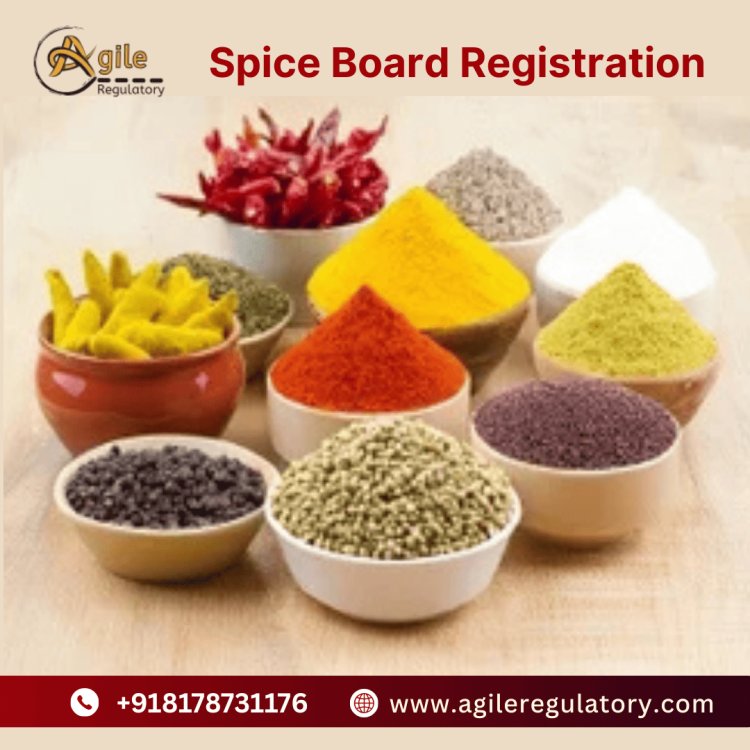Optimizing Your Supply Chain for Quality and Compliance in the Indian Spice Industry
India has long held the crown as the world’s largest producer, consumer, and exporter of spices. With its rich legacy, the Indian spice industry is not only a cultural cornerstone but also a critical component of the country’s agri-export economy.
Share this Post to earn Money ( Upto ₹100 per 1000 Views )

as global markets grow more stringent about food safety, traceability, and regulatory compliance, Indian spice businesses—ranging from farmers to exporters—must evolve their supply chain models to ensure quality and adherence to national and international standards. Optimizing the supply chain for both quality and compliance is no longer optional; it's essential for sustained growth and credibility in global markets.
Understanding the Modern Supply Chain Challenges
The traditional supply chain in the Indian spice industry is often fragmented and informal. This presents several challenges:
-
Lack of Standardization: From inconsistent drying techniques to variable grading practices, quality can vary dramatically between batches.
-
Traceability Issues: Without a well-documented system, tracking the origin of a contaminated or substandard product becomes nearly impossible.
-
Compliance Gaps: Global export destinations require adherence to stringent norms like HACCP, ISO, and sanitary certifications, which many Indian exporters struggle to meet.
-
Inefficient Logistics: Delays in transportation and lack of cold storage can degrade product quality, especially for high-value or perishable spice varieties.
These issues not only affect export potential but also harm the reputation of Indian spices in the global market.
Key Steps to Optimize the Supply Chain
1. Source from Certified and Educated Farmers
Partnering with farmers who are trained in Good Agricultural Practices (GAP) ensures better quality right at the source. Encouraging the use of organic farming, proper drying methods, and chemical-free pest control can significantly enhance the quality of the yield.
2. Implement Quality Control Systems
Testing at multiple points—procurement, processing, and packaging—should be standard practice. Establishing in-house or third-party labs to monitor pesticide levels, moisture content, and microbial contamination can add credibility and minimize rejections from international buyers.
3. Digitize for Traceability
Technologies like blockchain and QR code-based tracking can revolutionize the spice supply chain. From farm to export container, documenting every step ensures better compliance and builds trust among global stakeholders.
4. Adopt Food Safety Certifications
Acquiring certifications like FSSAI, ISO 22000, or HACCP can make your business export-ready. These are often prerequisites in regulated markets like the EU, US, and Gulf countries. Integrating these standards into your operational practices not only ensures compliance but also improves internal process efficiency.
5. Focus on Eco-Friendly and Compliant Packaging
The packaging used must comply with both domestic and international environmental standards. Using biodegradable materials, proper labeling, and tamper-proof seals adds a professional touch and ensures legal compliance.
6. Establish Reliable Logistics Partners
Cold chain logistics, GPS-tracked shipments, and just-in-time delivery systems can reduce spoilage and increase reliability. Working with logistics partners who understand the specific needs of spice exports can be a game changer.
The Role of Agile Regulatory in Spice Board Registration
Spice Board Registration is a mandatory requirement for businesses involved in the export of spices from India. It validates the authenticity and legal compliance of the exporter and is a key trust factor for foreign buyers. Agile Regulatory streamlines this process for spice exporters by offering expert consulting, document preparation, and application management. With years of experience in dealing with government portals and compliance procedures, Agile Regulatory ensures that your registration is completed efficiently, without delays or rejections. This hassle-free approach helps businesses stay focused on their core operations while ensuring they remain compliant with all regulatory norms set by the Spices Board of India.
Conclusion
The global spice market is expanding rapidly, but with it comes increased scrutiny and demand for quality and compliance. For Indian spice businesses to thrive, optimizing the supply chain isn’t just about cutting costs or improving speed—it’s about building a transparent, sustainable, and compliant system that meets global expectations. With the right mix of technology, partnerships, and professional support from agencies like Agile Regulatory, the Indian spice industry can solidify its leadership on the world stage.















